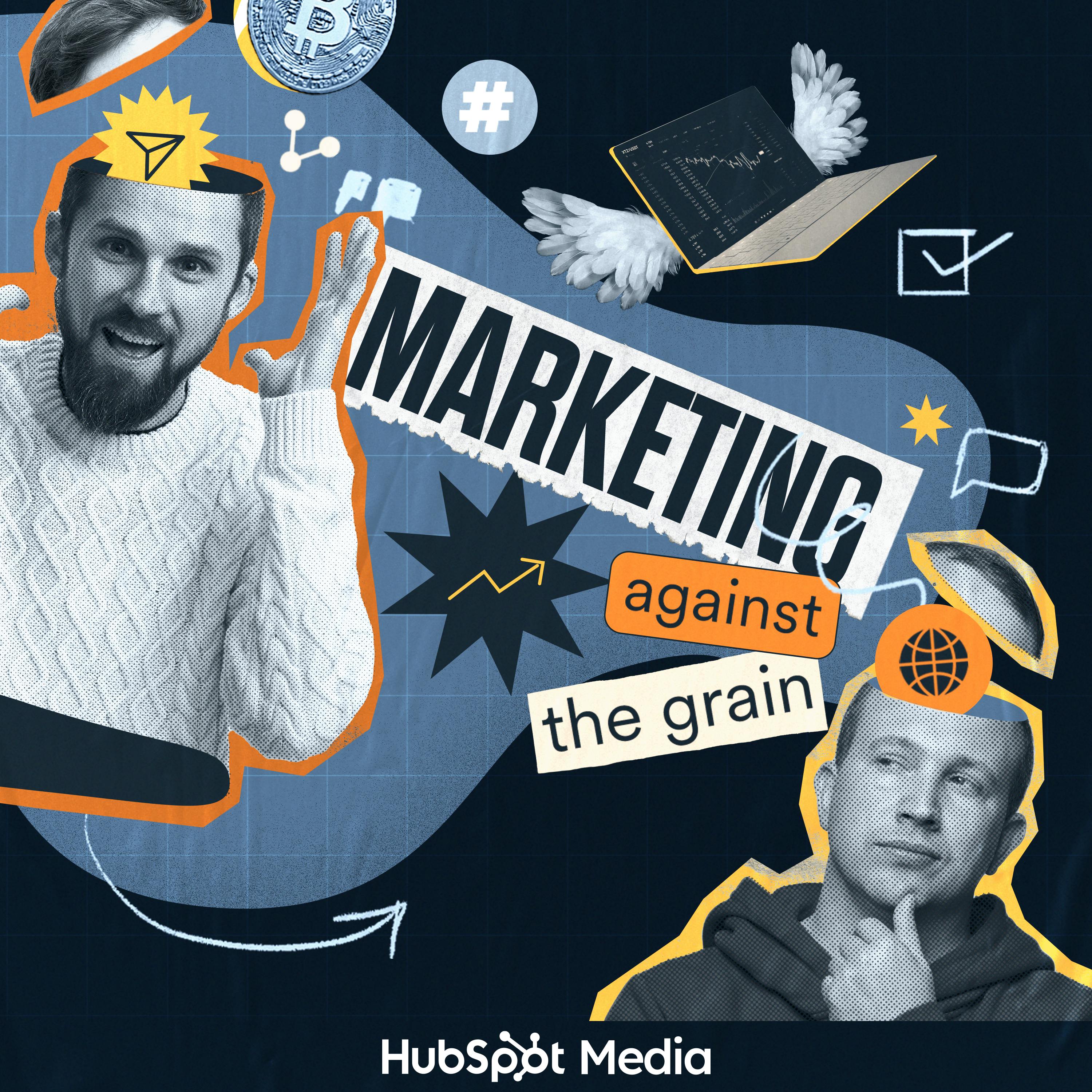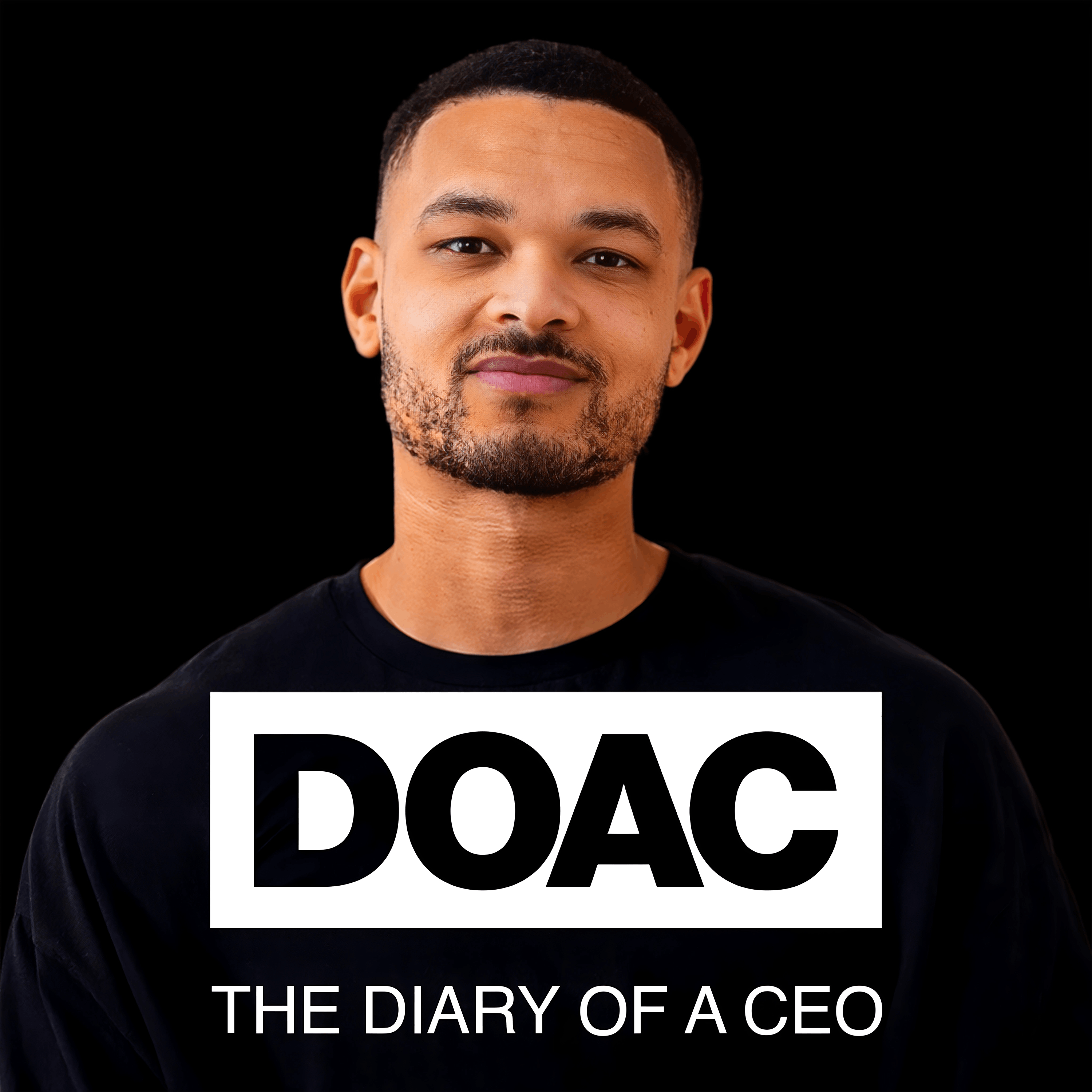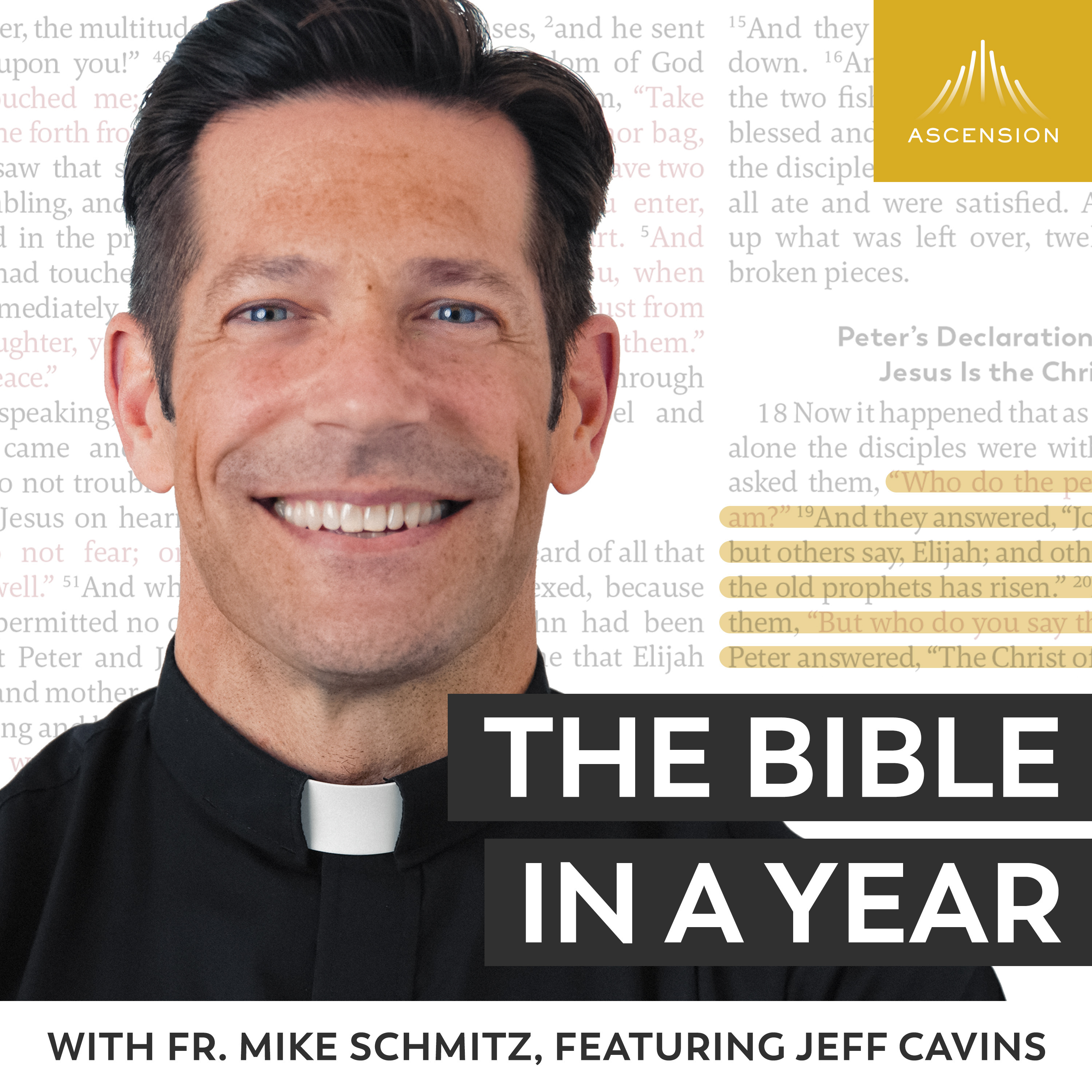.png)
Shine On Success
Shine on Success is a dynamic, story-driven podcast where extraordinary entrepreneurs, visionary leaders, and resilient change-makers share their journeys to success, revealing both the challenges and the strategies that led to their breakthroughs. Each episode offers a unique blend of inspiring personal stories, practical business insights, and actionable advice, allowing our guests to connect with an engaged, growth-oriented audience ready to be motivated and uplifted. By joining us, you’ll not only have the opportunity to showcase your expertise and inspire listeners but also to be part of a powerful platform that celebrates ambition, innovation, and the courage to turn dreams into reality.
Shine On Success
Rainmaker Mindset: How to Turn LinkedIn Into a Revenue Engine
What if LinkedIn could become your most powerful business tool—not for likes, but for real revenue? In this episode of Shine On Success, host Dionne Malush sits down with lifelong entrepreneur Colin Hirdman, co-founder of Monkey Island Ventures and creator of Rainmaker, a breakthrough system transforming how entrepreneurs and sales professionals use LinkedIn. Colin shares the exact process he used to grow businesses, build high-level connections, and turn cold outreach into meaningful, profitable relationships. You’ll hear how he turned a criminal justice degree into a lifetime of entrepreneurship, the lessons he’s learned from failure, and the five core values that guide his journey with childhood friends turned business partners. If you’re an entrepreneur, sales leader, or anyone who wants to build intentional connections and actually convert on LinkedIn, this episode is your playbook.
✨ Take notes—this one’s packed with golden nuggets, growth hacks, and inspiration to help you shine on.
Connect with Colin here:
LinkedIn: https://www.linkedin.com/in/colinhirdman
Website: https://www.monkeyislandventures.com/
Connect with Dionne Malush
- Instagram: @dionnerealtyonepgh
- LinkedIN: /in/dionnemalush
- Website: www.dionnemalush.com
- Facebook: /dmalush
- LinkTree: https://linktr.ee/dionnemalush
Welcome to another episode of Shine on Success, where we dive into the journeys of bold entrepreneurs, thought leaders and game changers who turn challenges into opportunities. Today's guest is Colin Herdman, a lifelong entrepreneur who started his first business just a week after graduating college and hasn't looked back since. He's now building companies through Monkey Island Ventures, a firm he co-founded with two of his best friends, which is awesome. But today we're diving into his latest venture, rainmaker, a game-changing system that helps sales professionals master LinkedIn, build powerful networks and turn connections into conversions. If you've ever struggled to make LinkedIn work for your business or felt like you were just shouting into the void, Colin has the blueprint to change that.
Speaker 1:We're talking lead generation, sell strategy and how to make LinkedIn your number one business tool. So grab a notebook, because this one's going to be packed with golden nuggets. And, colin, welcome to my show. I'm super excited to talk to you because I don't think I know too many people that know a lot about LinkedIn, so I'm excited about that. But my very first question for you. I love to always ask this, but I put a twist on it what's one thing you'd love for people to know about you that's not on your LinkedIn profile?
Speaker 2:Yeah, well, first, yeah, thanks so much for having me. I'm super excited to be here. I would say, yeah, they could probably infer this a little bit from my LinkedIn profile, but I've never had to create a resume.
Speaker 1:There you go. Oh, that's pretty interesting because you've had your own business all of these years, right.
Speaker 2:Yep, yep.
Speaker 1:So, like you, I've been entrepreneurial pretty much most of my adult life. I did try a job for a few years and then I went to another job and I'm like, no, these aren't working. This doesn't work for me. I am definitely not going to listen to anybody tell me what to do ever. So that's kind of what happened to me too. So I started relatively quick out of. I graduated art school and then started a graphic design business. It was so awesome. So you started just a week after graduating college. What was your degree in college?
Speaker 2:Criminal justice. So I kind of had delusions of grandeur that I was probably going to be the 007 of the United States and that just never came to pass, so yeah, I love that.
Speaker 1:So then, all of a sudden, you graduated with a criminal justice degree. What sparked your decision to start a business, and tell me about that experience.
Speaker 2:Yeah. So I you know I was I really never knew exactly what I wanted to do when I was in college and I thought about maybe just dropping out in the middle and joining the Marines. My dad was a Marine and he's like, nah, you don't need to do that, he goes. You don't need discipline, he goes, you just got to get your liberal arts education. And so I pretty much just chose criminal justice, because you know there's plenty of courses in there that I thought were interesting and I could get out in four years.
Speaker 2:And then, halfway through my senior year of college, I was at my dad's 50th birthday party and I met a guy there that had this idea for starting this business, a direct mail data processing business. And I'm like you know, I have nothing better to do. And so he was like all right, well, you know I have nothing better to do. And so he was like, all right, well, you know, let's start this. And he had an IT company as well, a small IT company. So I pretty much just jumped in the captain's chair of this you know little startup and just learned it all through the school of hard knocks. I never took a business class, never took an accounting or marketing class in college. So, yeah, it was just learning it all.
Speaker 1:Yeah, while while I'm building, yeah, I love that and I feel like we're like similar people, because my dad was self-employed pretty much all of his life because he started a job and that did not work well, so he started his own business. So the only guidance I had was that and of course they didn't do a lot of things right because they didn't know, because you're not it wasn't like we were taught that right, like we didn't have this kind of classes or that kind of coaching back then or training that people could learn what we know now today, like you can. You can learn anything today, start from zero and be in a business. You could go on tiktok and have a whole education. You could go on youtube an entire education. It's amazing the opportunity people have today.
Speaker 2:Agreed. There's no shortage of information. You can grab it all online, and that's only accelerated with AI.
Speaker 1:For sure I love AI, so much I love it. Let's talk about Monkey Island Ventures. How did you and your two childhood friends turn the lifelong bond into a business venture? Talk to me about that.
Speaker 2:No, that's a great question. So it's kind of serendipity. So that first company I had a little over a decade, I ended up selling that company in 2006,. The new ownership transition into that business. And then in 2007, my business partners, josh had moved up from Uruguay like a year before that and he was down there for about a decade because his dad's side of the family is Uruguayan. And then my other business partner, zach, helped a children's publishing company transition into a sale and worked himself out of a job there. So it was just serendipity, that kind of.
Speaker 2:Around 2007, the three of us were like, yeah, let's go into business together and we'd been talking, you know, through 2006 and whatnot. And then, yeah, kind of formalized in 2007. It's been wonderful. So we've all known each other since we were about five.
Speaker 2:Monkey Island Ventures is named after a park we used to play on when we were kids, located here in St Paul. And you know, I think, more than anything, we've always put our friendship ahead of business, ahead of dollars, even came up with kind of what we call the five F's, which is freedom, finance, family, friendship and fun. And those five F's are what we live by every day. And, yeah, as you well know, the entrepreneurial path is very difficult. There's a lot of ups and downs, and it's just wonderful having business partners that you can share your personal and professional life with, and so I would highly recommend anyone that's listening, you know, if you are able to establish, I think, a baseline of if you're going to business with friends like what's most important you can really foster, I think, really meaningful relationships and really impactful businesses together.
Speaker 1:I love that. So what does Monkey?
Speaker 2:Island Ventures do, yeah, so it's a holding company. So underneath that we have three, I would say, working entities. So one is a digital marketing company called Agurian, the second is a software development company called Cloudburst, and then the third is Rainmaker. So Agurian is more kind of midsize companies working with their marketing departments through digital marketing, and then Cloudburst does software development primarily for founders or entrepreneurs that want to build product. And then, yeah, rainmaker is kind of our startup that I kicked off at the beginning of last year and we have about 40 employees between those three companies.
Speaker 1:So what's been one of the biggest lessons you've learned from building multiple businesses?
Speaker 2:Yeah, a few things.
Speaker 2:One is the types of businesses that we have started has been a pretty good mix of, like, saas companies, service companies, and we've had our definitely our fair share of failures.
Speaker 2:I'd say probably, you know, 60, 70% of the businesses we stood up didn't make it, and a lot of that was due to us creating something that was fairly new, that was not necessarily a really established marketplace for what we were bringing, and so it was almost kind of like kind of moonshots right, like you're really taking big swings at some things and on one hand, that can be really fun and can be invigorating trying to launch something like that, but when you don't make any money and you're struggling to get product market fit, it's incredibly frustrating.
Speaker 2:There's an article that I'd recommend you and everyone read called the ladders of wealth creation and it was written by Nathan Berry, who I don't know if you're familiar with ConvertKit, but it's like, yeah, it's $100 million SaaS and he wrote this article on the ladders of wealth creation. It's really just kind of talking about these four ladders which are working for someone else services, productized services and products and just really gets into the nuance of you know the kind of business that you want to start and the difficulty of starting different types of businesses, and so I'm telling a lot of entrepreneurs these days like there's nothing wrong with starting a service-based business and starting to generate revenue and then starting to build product within the service-based company that can service your team, that can service your customers and really start to build product like within a service-based company, versus just directly going right to product and having a difficult time generating enough revenue to keep you going.
Speaker 1:So let's take a step back into the adversity of failure, right? So you fail a couple of times. Oh yeah, how do you pick yourself back up every single time? What is something that you do to help pick yourself back up?
Speaker 2:Yeah, again, I think part of it is having the business partners, that part of it is the team that we have, and so and I think part of it also is being diversified, where we have different entities that are successful and that can help some of the failures that we have.
Speaker 2:But over time we've tried to get a lot better at mitigating those failures and learning from our mistakes. But I think some of it goes to your base philosophy around life and for me, I think a lot of it is knowing that we have this one life, and when I'm old, I would like to look back on my life and know that I took risks and that I built things and that I lived a life that was really worth living. And failure is nothing to it's not a, it's not a shameful act. I think decades ago, you know, people looked at failure and then thought that really reflected poorly on you. Nowadays that's so different and I think that narrative is just a wonderful thing, because the world needs more entrepreneurs, it needs more creators and builders, and so you know, I think, associating yourself with networking groups and mentors and people that can give you that support when you are feeling down but that is a hallmark, I think, of any successful entrepreneur is picking yourself up by your bootstraps and just keep going.
Speaker 1:I agree, I love that. So tell me about Rainmaker what inspired you to launch it and how is it changing the way people use LinkedIn? Because that's very interesting to me because there's so much out there, so many different social medias, right, and LinkedIn. I just hold our company, so I own a real estate agency with 200 agents and I just got last week talking to them about LinkedIn and the demographics of LinkedIn versus you know the demographics everywhere else, like, most people are employed or looking for a job, most people are business owners or entrepreneurs or you know there's a different demographic and how, how do we use it? What makes the most sense?
Speaker 2:Yeah, no, I, I, that's just a that. That that's a great question. So I had been doing a lot of growth hacking over the last seven years through cold email and LinkedIn automation and outreach for myself, and what I realized is that I got really, really good at doing LinkedIn and LinkedIn was performing better than my cold email campaigns. And so at the beginning of last year I went to my business partner, said you know, I think I could build a real business off of the software and process that I've built out. And they said, ok, well, go for it. So I did, and the types of clients that I have are everything from like fractionals and solopreneurs I have a couple of realtors and then I have kind of more like founders, owners of small to medium sized businesses, where they have a team, and then I have some larger clients where some of their salespeople are using it Everybody.
Speaker 2:The way that Rainmaker works and what I'll share is it's the same basic strategy, regardless of who you are or the type of company that you're in and everything that I'll share. People can do all of the things that I'll be talking about manually. You don't need me or Rainmaker to do it. Rainmaker is really just. It uses automation and it uses the strategies that I have, and a lot of my clients like interacting with me as well, so that's part of what I offer. It's almost like a white glove SaaS.
Speaker 2:But what I will say is that what I focus in on in LinkedIn is growing out a network, leads and sales. That's my focus. I want LinkedIn to be a revenue driver for my company and I want that to be true for my clients as well. I do not pay any attention to my clients LinkedIn profile and I do not pay any attention to organic posts. So likes and comments and all that that's not in the purview of how I focus in on and then what I will say. Say it, the way that I think about LinkedIn is kind of in these three layers. The top layer is, philosophically, that you have to be authentic and genuine on LinkedIn. I think most people do a great job of that.
Speaker 2:The second thing is you have to go into it with an educational mindset, because nobody wants to be sold on LinkedIn. If you're reaching out and connecting and trying to book meetings right away, if you're trying to sell people right away, it won't work. It's just going to turn people off and you're not contributing to the LinkedIn ecosystem. That makes sense. Yeah, the other thing about mindset is having an experimentation mindset, which is stacking the LinkedIn features and functions that are working for you, table the ones that aren't Doesn't mean you don't try it later, but you really want to adopt that experimentation mindset. Adopt that experimentation mindset and then finally, you really have to.
Speaker 2:You know, as a founder, like you and I, or if you sit in a sales seat or a marketer seat, you have to understand what are the pains and barriers your prospects are trying to overcome. So what is it that they want to be educated on and, most importantly, what is it that you can teach? What can they learn from you? And that's the basic philosophy that I think anyone that wants to succeed using LinkedIn needs to adopt, which is being authentic and genuine that education, experimentation mindset and, finally, figuring out what your audience can learn from you. So when you adopt that philosophy, kind of the layer underneath that then would be around building out an audience. So you want to start connecting with people that could be your customers or your clients and you have to build that audience out. I'm typically using Sales Navigator to do that. You can use regular LinkedIn search as well.
Speaker 2:A couple of growth hacks is LinkedIn events. So if you have any direct competitors or industry organizations that are doing a LinkedIn event around a topic that your business solves for, if you go and attend that event, you can see everyone else that's also attending that event, so you could actually start building out a prospect list of people that are publicly raising their hand saying here's who I am and I'm interested in this topic. The other thing is using a person as a proxy. So there's a woman on LinkedIn has about 70,000 followers and she talks a lot about like LinkedIn profiles and when you should be posting and organic posts and all that. Well, I reached out to connect with her and, because her connections are open, I can go and select people that are first connections to her but are second connections to me, that are founders or sales executives or whatever, and go and connect with those people, knowing that they're most likely following her because they want to learn how to grow on LinkedIn. Therefore, they'd be a good candidate for Rainmaker.
Speaker 2:So that second layer is really about building out a targeted audience through Sales Navigator, linkedin events, people as a proxy, things like that, and then the bottom layer is about activating that audience, and the basic thing that you really need to focus in on is growing out your first degree network, week in and week out. And so the way that I've done it is we send out 25 invites a day, monday through Friday during normal working hours. Anyone can do all of this manually everything I'm talking about. They can immediately just go and start doing this. I promise it will work. So, 25 people a day, monday through Friday during normal working hours, 125 a week, 500 people a month. You're still under the LinkedIn limit. So if you go to in-person networking events and things like that, you could still connect with people, probably around a 20 to 25% connection rate back, typically never using like a connection message, just reach out to connect and then if someone doesn't connect within 30 days, then we withdraw the invite right. That's just good hygiene on your account and you can do this. You can go into your account right now and start removing old invites, but that's just a good hygiene because you may want to connect with them at a later date and by removing that invite it gives you the opportunity to connect with them again later on. So that's the base foundation of what you should be doing.
Speaker 2:I think a lot of people undervalue the value of a LinkedIn first degree connection. Once you have that, you can use all these different ways of communicating with these people and build relationships over time. And so once you have that first connection, you can do things like. A lot of times we'll bolt on like a message campaign, right, where a thank you for connecting message will go out like one to three days later. But it needs to be authentic, right? It's just you're all you're doing is thanking them for the connection. You're not selling anything, you're not even trying to help, you're just thanking them and if they respond, it just shows up in your LinkedIn inbox.
Speaker 2:If they don't respond, then seven to 14 days later. That's where you have to really hone in on what types of value can I start adding to this person? It could be asking them a great question. It could be sharing an asset that your business built, or sharing an asset a third party built that you think they would find really compelling. It could be inviting them to participate in a LinkedIn poll. It could be inviting them to learn from you at an event or a LinkedIn live stream, right? So there's all these different ways that you can interact with people on LinkedIn and really start to build relationship over time. So I'll pause there and give some specific examples, but I'll just see if you have any questions.
Speaker 1:All right, so that was great information. I love that and you're right, it does seem simple enough to do if you take that strategy and put it into LinkedIn. I personally love LinkedIn and I've been using it a lot more lately because I see the value and I have been using the search, which is I didn't realize how great the search was. You can search for whoever you're looking for, and so I've been having some great luck with it.
Speaker 1:I have a story to tell you that one of my friends he is a coach, and he started using LinkedIn and starting giving video text or video messaging to people, and so he sent a video message to someone which connected him to John Maxwell, and now he's writing a book and John Maxwell is helping him write a book. Like it all came from the LinkedIn connection, but he said he was a little bit unique by sending the video message versus just you know the message, because hardly anybody does that on LinkedIn. I don't know if I've ever had one, so I think that's pretty cool advice. So let's talk about this what's the biggest mistake sales professionals make on LinkedIn and how can they fix it?
Speaker 2:You know again anyone that sits in a sales seat that has to close deals. I've sat in that seat my really my entire life. I know what it feels like emotionally to really want to close deals to bring in revenue, to grow your business or grow your book of work. But you have to emotionally distance yourself from that and remember it takes somewhere from seven to 10 touches before someone that has never met you before will start to trust you, see you as a thought leader and whatnot. So I think really lean into education, into relationship building and providing value, and take a step away from just trying to book meetings and close people right away.
Speaker 1:Yeah, that's great advice. I've been doing the LinkedIn newsletters now because I'm trying the same technique without even knowing what I was doing, just providing value all the time because owning a brokerage, you know. The point is so that people get to know, like and trust me, and I give the opportunity on all social medias for them to do that. So then I wasn't using LinkedIn properly and now I think I'm doing better, but I still have some great tips that I learned from you. Yeah, so let's talk about a success story of someone who transformed their process using Rainmaker strategies.
Speaker 2:Yeah, I have a couple of examples, but the one that you know I think most ideal would be there's a guy that has a LinkedIn or sorry, a fractional practice and what he's doing, so fractionals are, you know, people that go into businesses where, if you want to hire, like a VP or a CXO right, somebody at a high level, but you can't maybe afford that full time, you'll hire someone at a fractional level right, where they'll come in for maybe 25% of their time or 50% of their time is dedicated to your company and you're getting that level of expertise. And so he wanted to start building out, you know, his fractional placement practice and creating a community of these fractionals. Yeah, we started connecting him with with fractionals and his connection rate, you know, was in the mid thirties and has been for for months now connecting with fractionals, and he's grown his, his fractional community by about 450% in the last six months, and so part of that is, you know, he's creating these first connections with fractionals. He's building out a community of people that were these fractionals can rely on him and each other to, you know, understand how best to grow their practice, and he's using LinkedIn live streams as well to educate these fractionals on what they should be doing and then using these live streams to allow these fractionals to help each other out as well in how they're sharing their expertise. So that's one really just great example of how he's growing his business just by creating more first connections, you know, building relationship using LinkedIn live streams. It's great, and you know what I, what, what I would say, the.
Speaker 2:You know the other quick thing in terms of kind of a chronological order of what I've done in the last, even three months. So three months ago I started reaching out to about 300 sales executives here in the Twin Cities and I reached out to connect. I've connected to about half, so about 150 of them connected back to me and then my first message was thanks for connecting. My second message was asking if they knew of any good networking events here in the Twin Cities, and I got a nice response. My third message was inviting them to participate in a LinkedIn poll that was really targeted to sales executives, and I got about 38 of them to participate in the LinkedIn poll. And then I did a LinkedIn live stream teaching them how to grow their network leads and sales on LinkedIn, and I got about 50 of them to register for that event.
Speaker 2:So that's just an example of like. I identified a target audience, I created first connections and then I started building relationship through messages or LinkedIn polls or LinkedIn live streams. And that's really kind of just the tip of the iceberg, because there's so many other things that I'll be doing to this audience now or through the course of the rest of the year, and I already know what I'm doing. I'm not having to spend tons of time creating new content and I know that I'm going to end up closing clients because of the process that I put in place. So I would just highly recommend everybody listening to really copy what I'm what I'm saying here, because I guarantee it will work.
Speaker 1:Yeah, the fact is that you have a process and I think sometimes people don't think of social media as something they need a process for. Right, You're going to sit there and search all day long, but if I have the same process every day, I do the same things, right, and it's been working. I'm getting so much engagement and you can see the difference in social media loves that, right. So if someone brand new okay, they're starting in business and LinkedIn they start a new LinkedIn page and they want to get started. See, because I started so long ago, probably half the people on my page, like I just said yes to right, I didn't think about the connection until it was already years into it. What's a piece of advice you can give to where they would focus first?
Speaker 2:The number one thing. I would do two things. The number one thing I would do on LinkedIn is to build out, first, connections with your, with your ideal client profiles Again just reaching out to 25 a day. If geography doesn't matter, I would start in your local market. If you're in kind of a mid to large size, you know city, because the other thing you should be doing is going to in-person events, right, and meeting people. That's a great way to, I think, really add value to the online connections that you're also trying to make. And so that's the number one thing that I would do is go to in-person events. Nothing beats that, especially if you're getting started, and start getting some revenue through the door. And then build out, start connecting with 25 people a day that are your ICP's, like the way that I described, and then I would start honing in on reusable content.
Speaker 2:So we haven't talked at all about organic posting on LinkedIn. You should still be doing that, you know, but I don't think you certainly don't have to do it every day. If you're doing it once or twice a week, that's fine. Change it up, you know. Make sure some of your posts are value add where you know it has to do with your ICP specifically, but don't be afraid when you go to the LinkedIn. You to do with your ICP specifically, but don't be afraid. When you go to the LinkedIn sorry, when you go to the in-person events grab a photo of where you're at with some people and post that on LinkedIn. Or if something really wonderful happened to you in your personal life, post that. Or sometimes even just posting things that aren't so great, post that as well. But be a human on LinkedIn. Right, you want to add value to the LinkedIn ecosystem.
Speaker 2:But the great thing about kind of the process that I talked about is you know my ICPs I've built out to fractionals sales executives, founders. You know EOS implementers, business coaches so you should think about that as well. Like, start targeting some different verticals. Maybe target like two or three verticals of either by industry or title, and then go after those and start building out connections, because then what you can do is for, like my LinkedIn live streams.
Speaker 2:When I do them, the content is essentially the same, but when I invite my first connections to the event, I'll grab all of the founders and invite them, or all the sales executives and invite them, or all the fractionals invite them, and when they get to the event page, it will say LinkedIn growth webinar for founders or for sales executives or for business coaches, right?
Speaker 2:So when they get to my event, it's an event I'm doing over and over again. I'm using essentially the same content, the same deck, every time. So I'm not having to create all this new content and I'm just doing a little bit of a hook there and I'm getting that specific audience to get to that page. So not only is the content compelling, but then they also feel like it was made just for their industry or for their title, and that really improves the attendance rate for your live streams. So again, that's what I would do if I was just starting out. I would dedicate yourself to connecting with your ICPs Monday through Friday during normal working hours, 25 a day and then start building out some content that you could direct toward them. That's what allows you to use LinkedIn in a way that can actually grow your business.
Speaker 1:Thank you for that. That's fantastic information. So let's talk a little bit about you personally, outside of working, because you obviously love to work. You've been doing this a long time. You've built multiple businesses. Is there anything you like to do?
Speaker 2:Oh yeah, no, outside of work. Yeah, I love to travel. I don't do enough of that, but I love traveling. I have two young boys, 10 and 8. So I love spending a lot of time with them, and certainly my business partners, josh and Zach. You know scrum every morning talk about personal business stuff. We get together, you know, for about two hours at least once a week, and then, yeah, our families will rent an Airbnb two times a year and just get together and do that. So, yeah, you know, just spending time with friends and family, and so, yeah, I guess my business life is a lot more complicated than my personal life.
Speaker 1:I love that you talk about partnerships in such a loving way, because a lot of people say partnerships don't work, and I've been involved in a couple of myself and I'm currently in one, and it's not easy every day, but the friendship side of it does, I believe, help, but sometimes I'm sure it's ruined a lot of friendships. But yeah, so I'm very excited to have met you. I think that you just have so much to offer for a business owner to understand that the opportunity of more than just Facebook which Facebook is the largest one. There's nobody even coming close, but it's a different audience, right?
Speaker 2:So targeting the audience is just a different way to build your business, which I think is incredible. So what? Everybody's making up everything all the time. Right, we're all making it up. I don't care if you're a Tim Cook of Apple or whether it's. You know, you and I on this podcast, like we're all just making it up. So, aspiring entrepreneurs, please, you know, get in the game and start building. And for you know, existing entrepreneurs, you know, keep keep going. You know how hard it is if you're already doing it and you've probably already picked yourself up, you know multiple times. So continue to do that. You know, and I think entrepreneurship is one of the most creative and most impactful endeavors any human can embark on. So kudos to all of you doing that.
Speaker 1:I agree with you, so how could our listeners find you?
Speaker 2:So I'm the only Colin Herdman on the internet, so feel free to find me on LinkedIn. I love chatting and helping out other founders and anybody that sits in kind of that sales seat. And then rainmakergrowscom is the website and I'm trying to build it out as a resource as well, so there's some free resources on there. About like, my whole LinkedIn live stream process is a one page PDF. You can download that and copy my whole process from beginning to end. I've also created three GPTs. They're all focused on LinkedIn. One is building out a drip campaign, two plus messages just for LinkedIn Created, another one to help you build out LinkedIn polls and then a third to help you start building out LinkedIn live streams.
Speaker 1:I love that and I love GPTs. I love AI. It's changed my life so much in the last two years. I have so much more flexibility, but every moment I think of something.
Speaker 1:I just go to AI and say help me with this or, you know, recreate this for me. And it's amazing the content that I can put out. If I sat here all day long, I could have enough content in one day to last years. So, yeah, so I love it. So thank you for sharing that. You do that so for our subscribers, if you could like or subscribe or share this episode, that would be great. And, you know, be sure to check out LinkedIn, because there is huge opportunity there. You just have to look at it like another part of your business and work it just like you do everything else. So thank you, colin. I appreciate you being here. It's been a pleasure. I'm sorry about the barking dog, but we just got a new puppy and the other dog has been freaking out. I did not think it would last the entire podcast, but hopefully we'll get some of it out of there. So thank you for that and I hope to see you soon and I'll be reaching out to find out some more about how LinkedIn can help my business.
Podcasts we love
Check out these other fine podcasts recommended by us, not an algorithm.

The Jen Gottlieb Show
Cloud10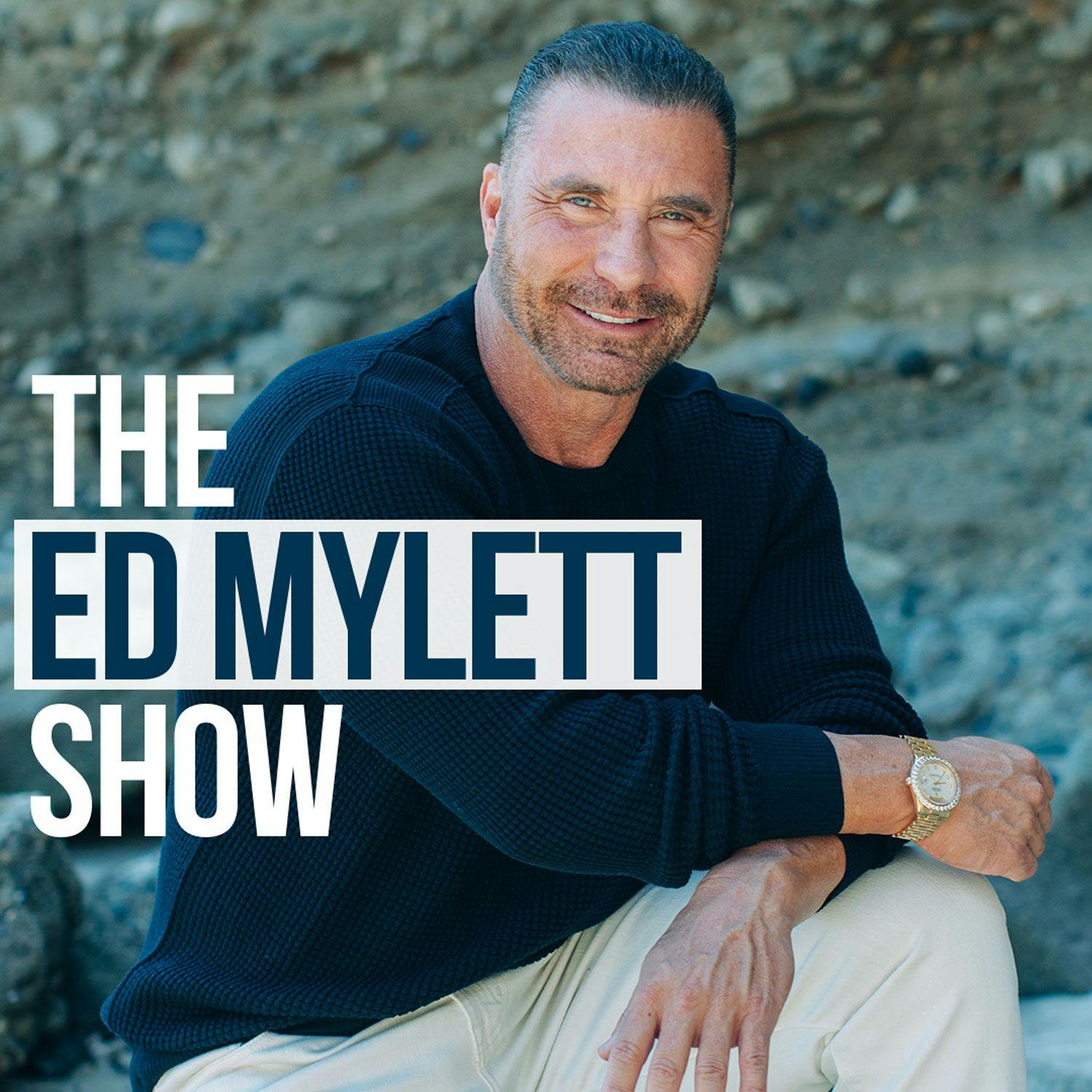
THE ED MYLETT SHOW
Ed Mylett | Cumulus Podcast Network
The Money Mondays
Dan Fleyshman
The GaryVee Audio Experience
Gary Vaynerchuk
Marketing Made Simple
StoryBrand.com
The Manifested Podcast With Kathleen Cameron
Kathleen Cameron
Social Media Secrets with Rachel Pedersen - The Queen of Social Media
Rachel Pedersen: Social Media Strategist, Marketing Consultant, Viral Entre
The Champion Forum Podcast with Jeff Hancher
Jeff Hancher
Motivation Daily by Motiversity
Motiversity
Built For The Game with Rob Cressy
Rob Cressy
The Brendan Burns Show
Brendan Burns
The Game with Alex Hormozi
Alex Hormozi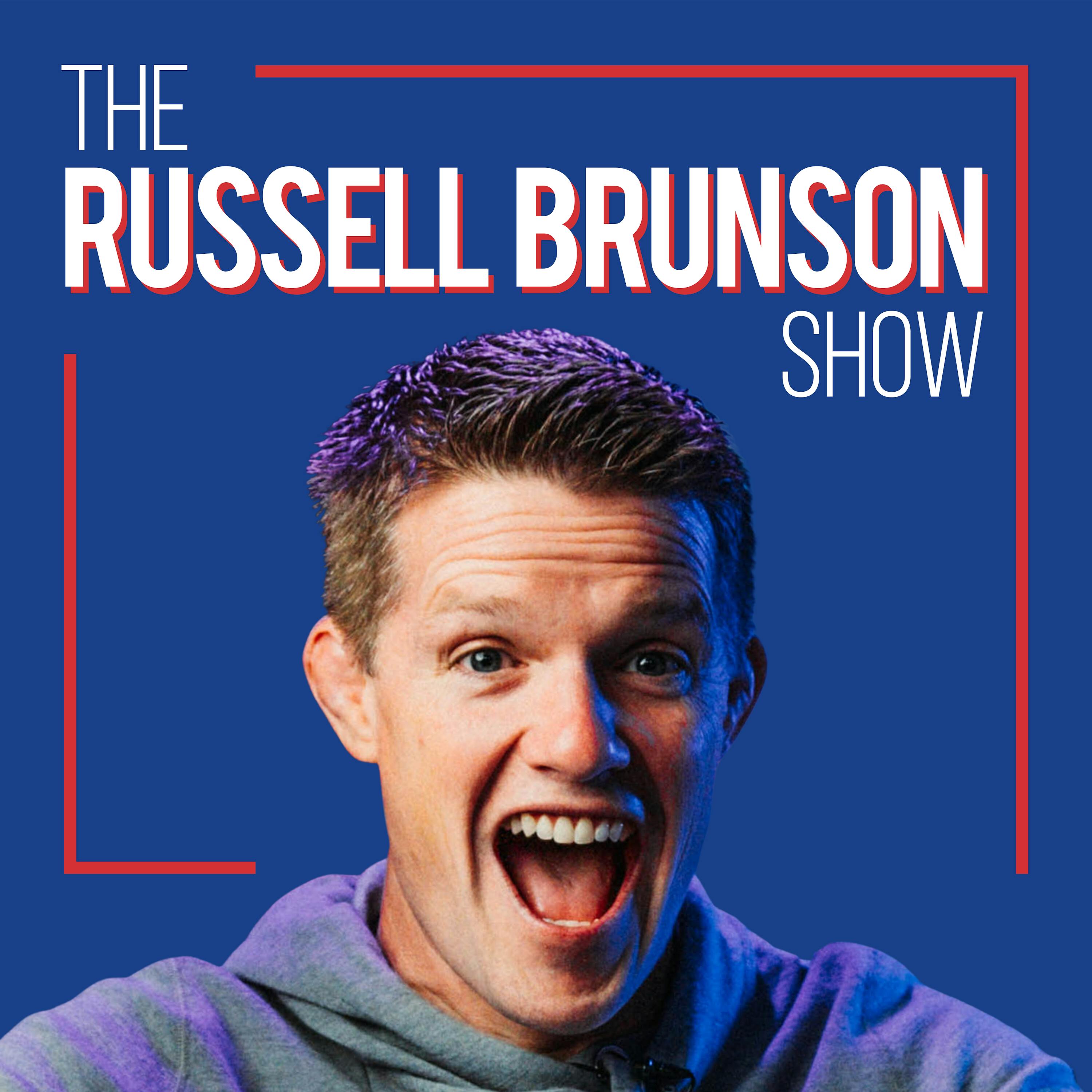
The Russell Brunson Show
Russell Brunson | YAP Media
The Amy Porterfield Show
Amy Porterfield
REAL AF with Andy Frisella
Andy Frisella
Marketing School - Digital Marketing and Online Marketing Tips
Eric Siu and Neil Patel
Epic Entrepreneurs Podcast
ActionCOACH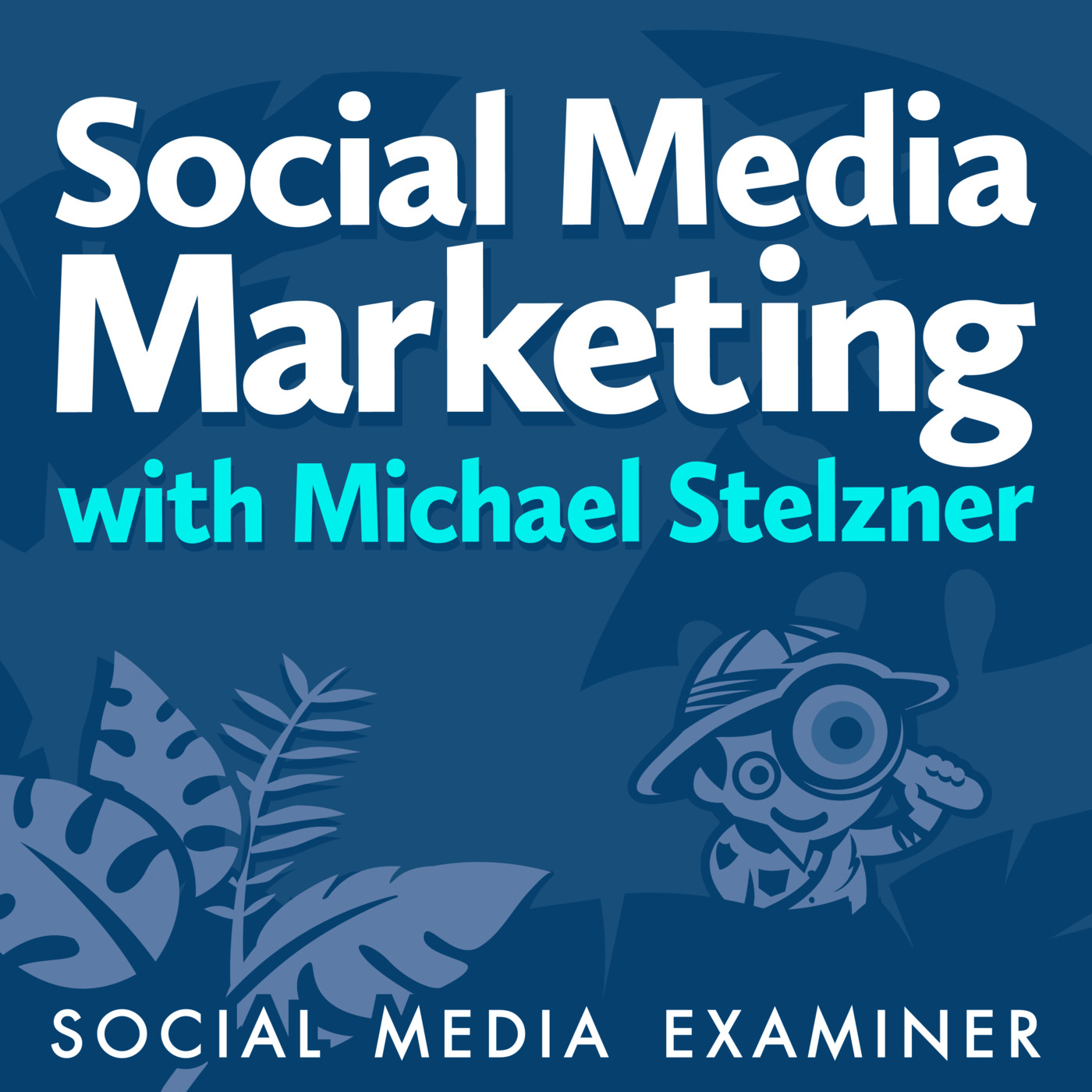
Social Media Marketing Podcast
Michael Stelzner, Social Media Examiner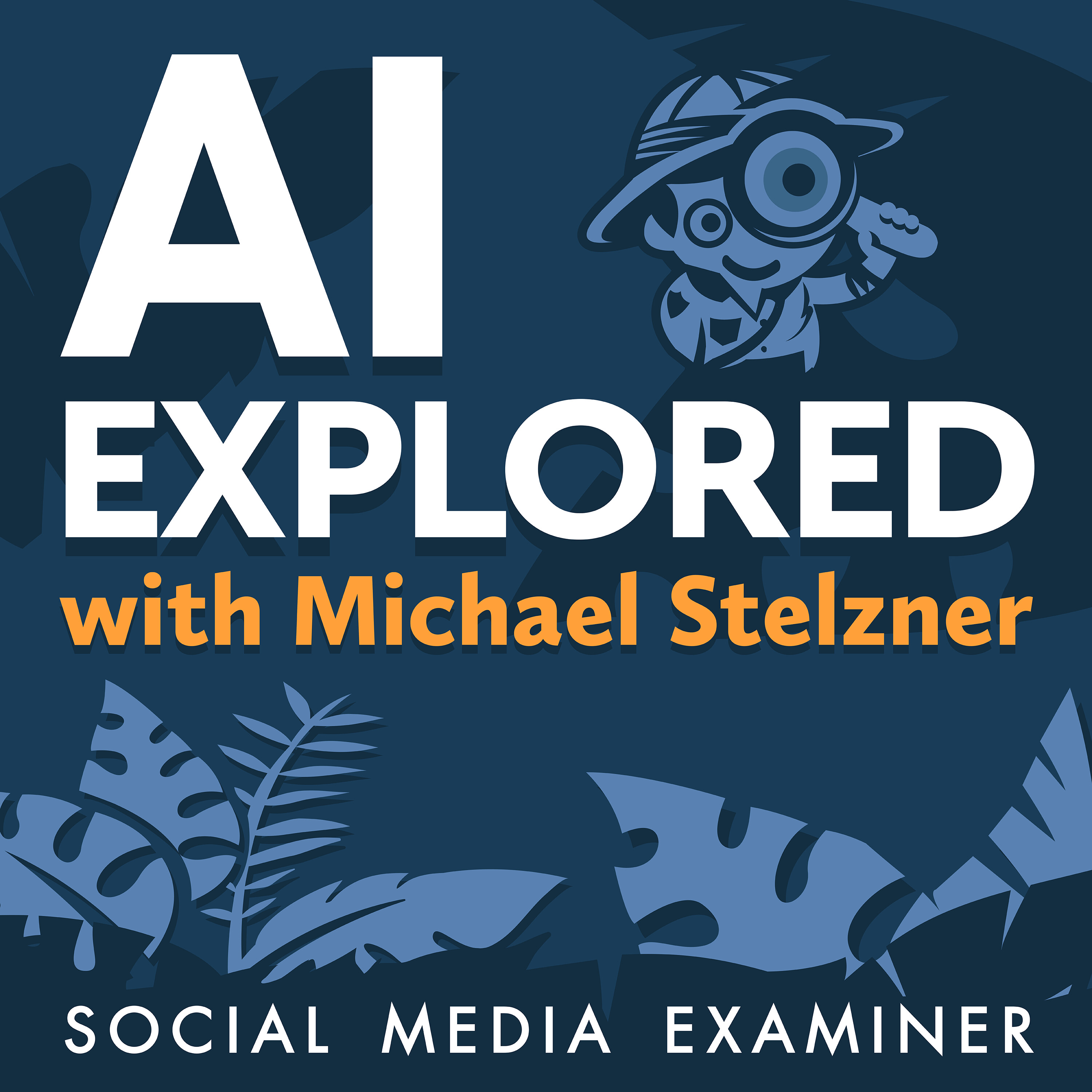
AI Explored
Michael Stelzner, Social Media Examiner—AI marketing
Artificial Intelligence Podcast: ChatGPT, Claude, Midjourney and all other AI Tools
Jonathan Green : Artificial Intelligence Expert and Author of ChatGPT Profits
The Hardcore Closer Podcast
Ryan Stewman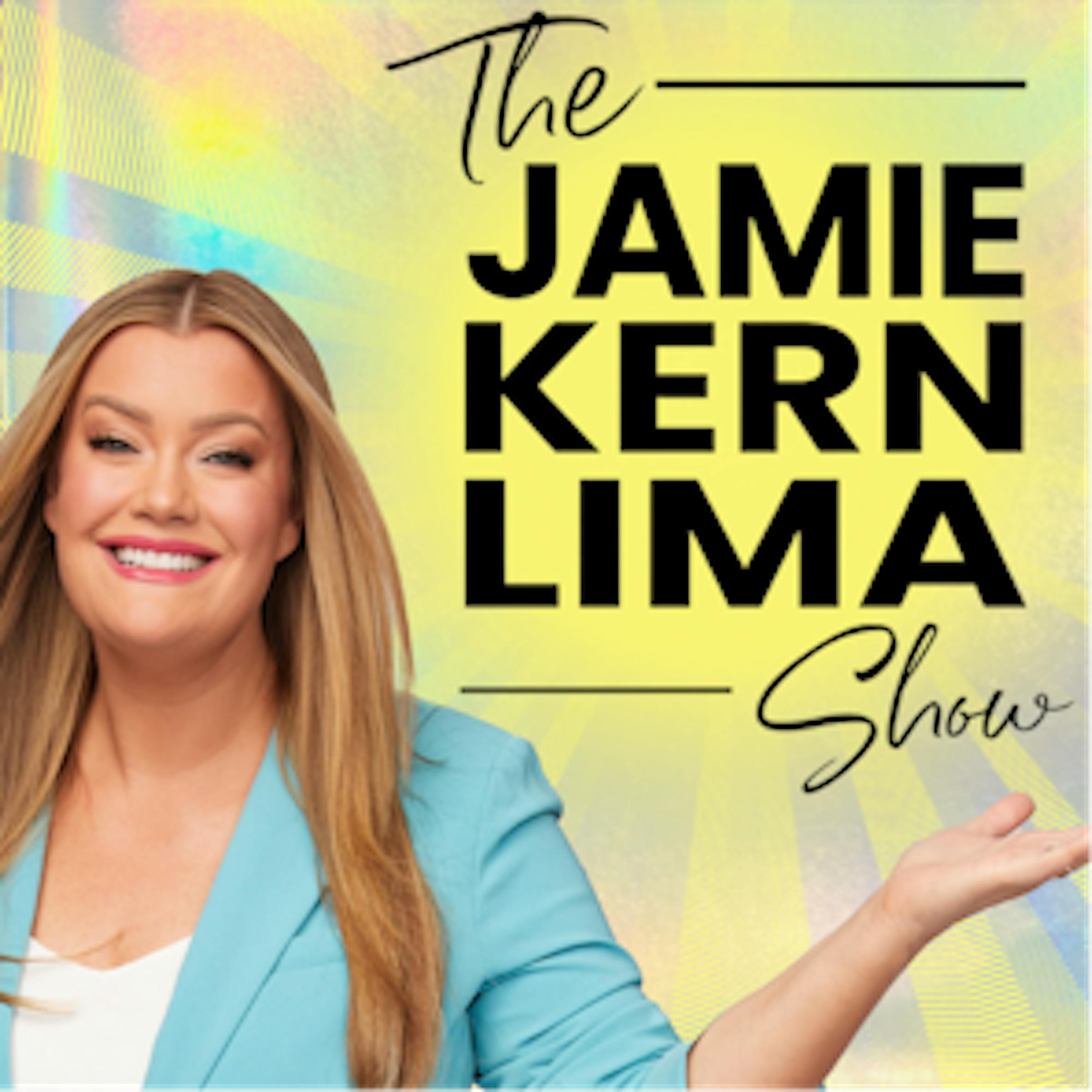
The Jamie Kern Lima Show
Jamie Kern Lima
The ActionCOACH Business Growth Podcast
James Vincent
GPS: God. People. Stories.
Billy Graham Evangelistic Association
Build Your Tribe | Grow Your Business with Social Media
Brock Johnson